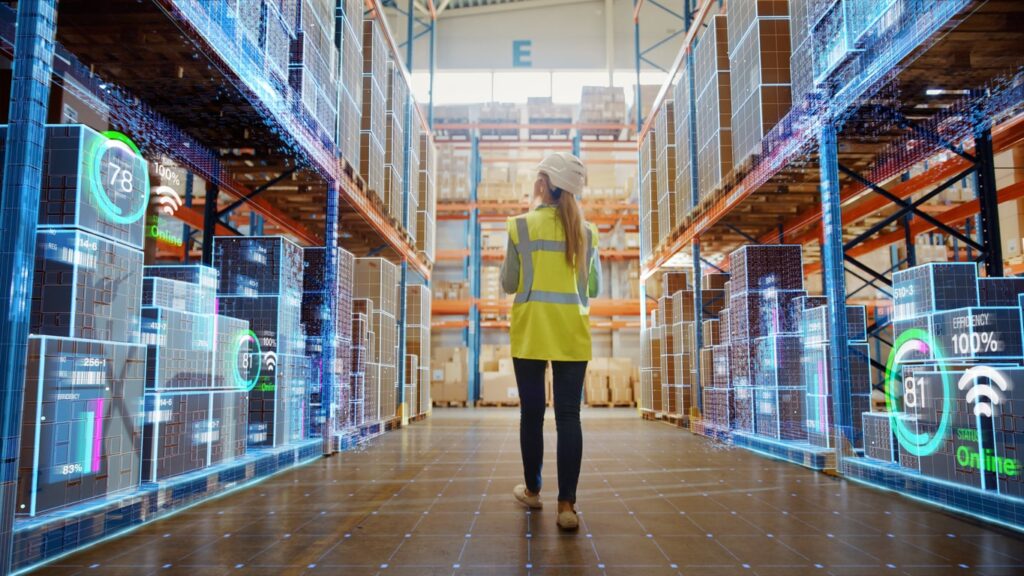Smart factories are at the forefront of revolutionising manufacturing processes in the current industrialisation era. These facilities promise previously unheard-of levels of productivity, efficiency, and customisation because they are outfitted with cutting-edge technologies like robotics, artificial intelligence (AI), and the Internet of Things (IoT). They are the early adopters of Industry 4.0, automating and digitising production lines to quickly and accurately satisfy the constantly changing demands of the market.
However, although resource management and operational efficiency are two areas in which smart factories excel, smart factories also pose serious sustainability issues that require immediate attention. Critical issues include the high energy requirements, production of electronic waste, resource-intensive nature of high-tech equipment, and wider effects on global supply chains and overproduction. As we delve deeper into the world of smart factories, this article aims to shed light on the less discussed environmental impacts, explore potential solutions, and outline a path towards more sustainable manufacturing practices.
The Environmental Challenges of Smart Factories

Problem 1: High Energy Consumption
Despite efficiency improvements, the sophisticated machinery, continuous data processing, and automation systems in smart factories are highly energy-intensive. The reliance on non-renewable energy sources for these technologies leads to significant carbon emissions.
The Solution: Transitioning to Renewable Energy
The implementation of renewable energy sources can help smart factories reduce the impact of their energy consumption. Cleaner energy sources like solar, wind, geothermal and bioenergy can lessen carbon emissions and the need for fossil fuels.
Problem 2: High Amount of Electronic Waste
Due to the rapid advancement of technology, equipment quickly becomes outdated, producing a significant amount of electronic waste. The process of recycling or properly disposing of these materials is difficult and frequently overlooked.
The Solution: Enhanced E-Waste Management
It is essential to create strong recycling programmes for electronic waste. This entails developing responsible disposal procedures, encouraging the recycling of uncommon materials, and designing products for simpler disassembly.
Problem 3: Resource Intensive Technologies
Rare earth metals and other earthly resources are needed for the manufacturing of sensors, batteries, and sophisticated machinery. This extraction process often results in pollution, habitat loss, and other environmental problems.
The Solution: Sustainable Resource Sourcing
The environmental impact of resource extraction can be decreased by supporting sustainable mining methods and encouraging the use of less hazardous materials. Furthermore, funding studies on substitute materials can yield more environmentally friendly manufacturing choices. Find out how batteries help with renewable energy transition here.
Problem 4: Complex and Opaque Supply Chains
While smart factories might optimise their internal processes, the global supply chains on which they rely can be environmentally harmful. The transportation of goods, extraction of raw materials, and manufacturing of components often involve significant emissions and resource depletion.
The Solution: Supply Chain Transparency and Sustainability
Implementing stricter standards and transparency in supply chains ensures that all components of a product are produced responsibly. This includes monitoring suppliers for environmental standards and encouraging greener logistics practices. Cope with supply chain issues with RND now.
Problem 5: Overproduction Risks
Increased capacity for manufacturing may result in overproduction. The capacity to efficiently produce large quantities may exceed the real demand, resulting in surplus goods that ultimately end up as waste.
The Solution: Demand-Driven Production
Overproduction can be greatly decreased by using data analytics to produce goods based on actual market demand. To avoid needless waste, smart factories should concentrate on striking a balance between production capabilities and market demands.
Strategies for Greener Smart Factories
Digitalisation for Efficiency

Modern manufacturing is built on digitalisation, which presents a number of opportunities for greener, smart factories. Factories can attain unprecedented levels of efficiency by incorporating technologies like machine learning (ML), artificial intelligence, and the Internet of Things. These technologies help in the following ways:
- IoT for Resource Management: IoT devices can monitor and control the use of resources like electricity, water, and raw materials in real-time. Sensors can detect inefficiencies, leaks, or wastage points, prompting immediate adjustments. For instance, smart lighting and HVAC systems can significantly reduce energy consumption by adapting to real-time factory conditions.
- AI for Predictive Maintenance: AI algorithms forecast when equipment is likely to break down or need maintenance, saving energy and extending the life of the machinery. By ensuring that all machinery runs as efficiently as possible, this predictive approach lessens the environmental impact of both manufacturing and equipment disposal.
- Data Analytics for Process Optimisation: Advanced data analytics can simplify production procedures, cut waste, and improve supply chain logistics. Manufacturers can prevent overproduction and excess inventory by precisely producing what is required and, when required, by identifying patterns and forecasting trends.
Circular Economy Models

The circular economy is a regenerative strategy aimed at maximising resource utilisation and reducing waste. ‘Take-make-dispose’ is the traditional linear economy’s methodology; this model deviates from it. The circular economy can be implemented in smart factories by:
- Design for Longevity: Longer-lasting products are built with easily replaceable or repairable modular components from the factory. As a result, there is less need for frequent replacement and the environmental cost of producing new goods decreases.
- Recycling and Upcycling: Instead of being thrown away, end-of-life products are viewed as valuable resources. Recovered materials are recycled and added back into the chain of production. Another essential element of this strategy is upcycling, which is the process of converting waste materials into goods that are more valuable or of higher quality.
Resource Recovery: Smart factories can incorporate systems for recovering energy, water, and other materials from their processes in addition to recycling. For instance, heat produced by machinery can be collected and repurposed to cut down on the need for extra cooling or heating.
Water Conservation

Water is a vital resource in manufacturing because it is used as a raw material, for cleaning, and for cooling purposes. But with water scarcity becoming a global issue, conservation must take precedence. To manage water more sustainably, smart factories can implement a number of cutting-edge strategies, including:
- Advanced Treatment and Recycling: Within the factory, wastewater from manufacturing processes can be cleaned up and repurposed. Water can be highly purified using modern treatment technologies, allowing it to be reused in a number of applications.
- Rainwater Harvesting: Rainwater collection and storage can lessen the impact on the environment, increase water supply, and lessen reliance on nearby water resources. You can use this collected water for cooling or other non-potable uses like toilet flushing.
- Efficient Machinery and Fixtures: Water consumption can be greatly decreased by using water-efficient appliances, fixtures, and fittings. Closed-loop cooling systems, for instance, reuse water rather than continually obtaining new supplies. Water conservation is also aided by low-flow fixtures in factory canteens and restrooms.
Conclusion
Even though productivity and efficiency in smart factories have increased significantly, it is still important to address the environmental effects of these technologies. By understanding the challenges, implementing innovative solutions, and committing to continuous improvement, smart factories can lead the way in sustainable manufacturing. As they become more integral to the industrial landscape, the focus must shift from purely technological advancement to a balanced approach that prioritises environmental responsibility alongside innovation. The journey towards truly green smart factories requires collaboration, investment, and a shared vision for a sustainable industrial future.










